
As the Star Wars galaxy expands, the franchise has become self-referential to a fault. It’s no different in The Acolyte, a series packed to the gills with homages and Easter eggs. But despite its many callbacks and catchphrases, The Acolyte is also visually distinct and surprisingly accessible.
A lot of that can be attributed to Jennifer L. Bryan, the costume designer behind The Acolyte’s immersive looks. Bryan didn’t know much about Star Wars before joining the team — her work for Breaking Bad and Better Call Saul is a far cry from the stately frocks she crafted for The Acolyte. To showrunner Leslye Headland, though, an outsider’s perspective was just what the series needed.
That didn’t excuse Bryan from doing her research, of course.
“It was a lot of homework for me to catch up on,” Bryan tells Inverse. “When you have such an immense body of work and a timeline for the whole Star Wars galaxy — and you’re doing this prequel that’s a hundred-plus years before all that we know — to [maintain] a certain design freshness... it’s a lot.”
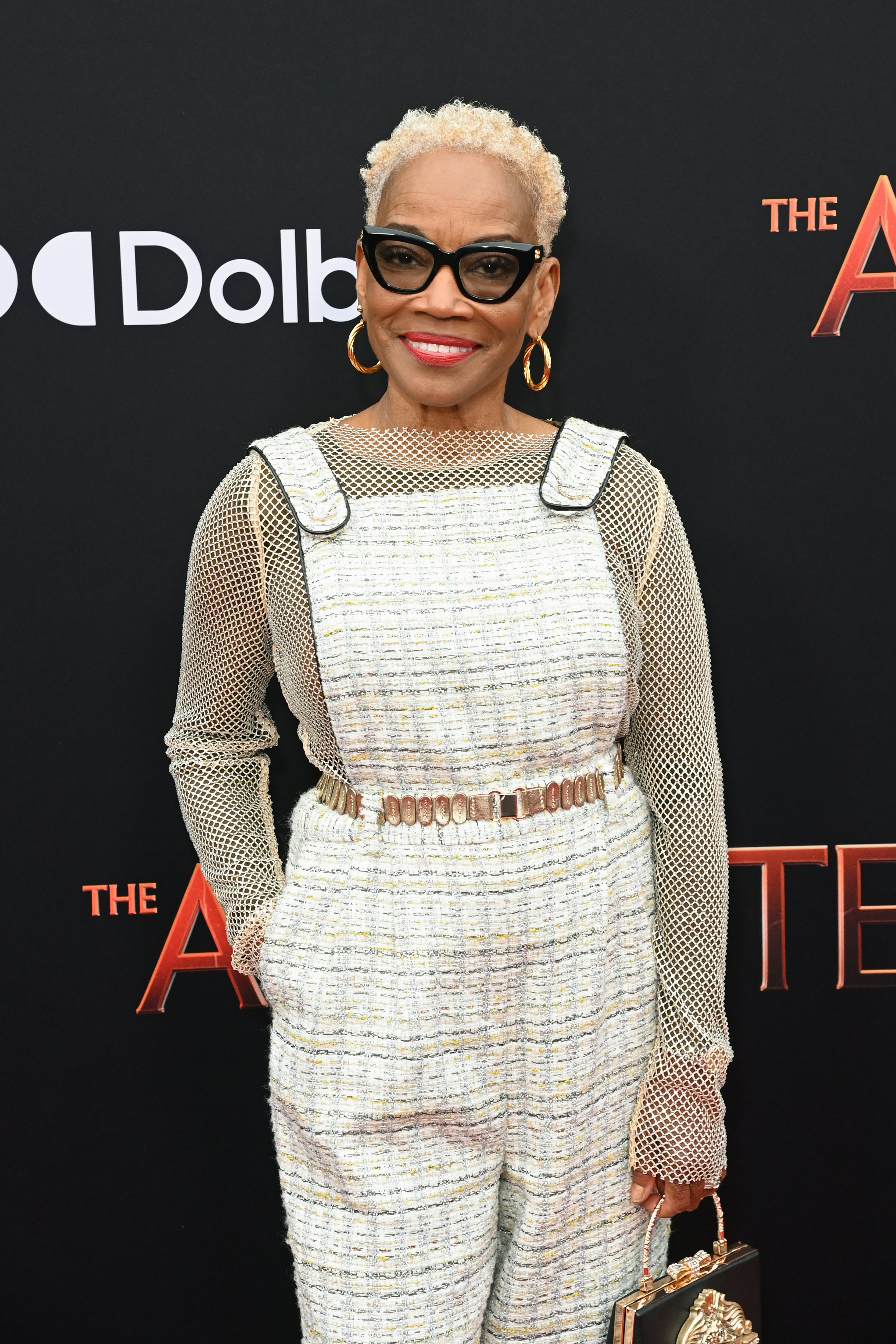
But because The Acolyte is also a period piece, taking place about a hundred years before the Skywalker Saga begins, Bryan had the freedom to look beyond the main Star Wars timeline. Ultimately she drew less from that galaxy far away, and more from our own — a choice that actually brings the franchise back to its experimental roots.
“I drew from old global cultures and civilizations, and took a deeper dive in the non-Anglo Saxon cultures,” Bryan says. “I looked into not just the culture itself, but what they wore, why they wore it, what they wore in peace times, and what they wore in battle.”
That exploration took Bryan from feudal Japan to Africa and its diaspora, and allowed The Acolyte to embrace aesthetics that were previously a marker for anything “alien.” Here, it’s anything but. The Acolyte may be set in the distant past, but it feels more human — and somehow more modern — than the Star Wars series that have come before.
A space assassin’s armor
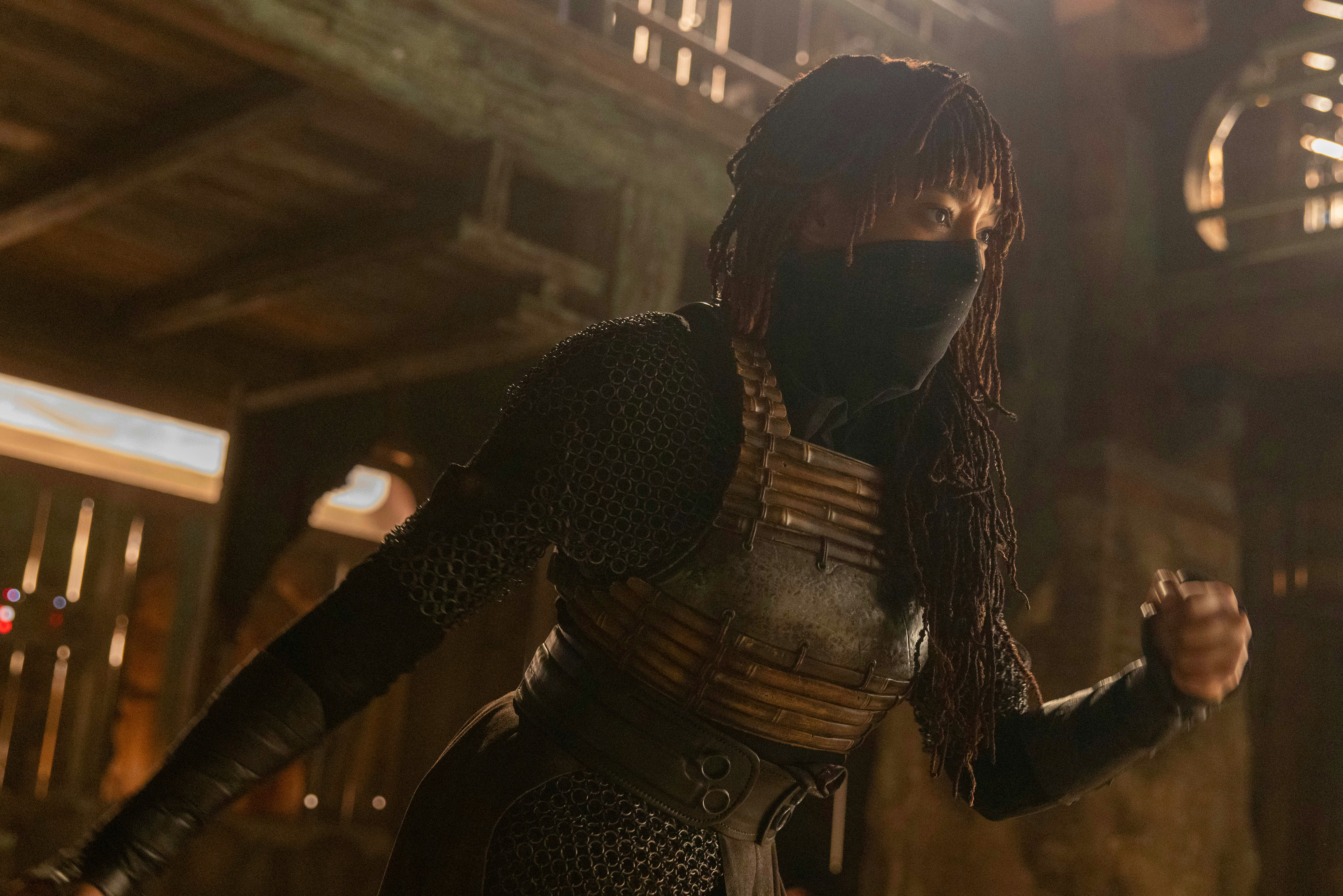
Like most Star Wars projects, The Acolyte owes a lot to the works of Akira Kurosawa, but it’s also inspired by classic wuxia stories, which allowed Bryan to pivot beyond samurai code and explore desert and nomadic cultures all across Asia.
That nomadic influence can best be seen — alongside African and Asian influences — in the character of Mae Aniseya (Amandla Stenberg). We first meet Mae after nearly 16 years on the run, and her costume definitely reflects that. “She’s her own mercenary; she doesn't have what I call a fixed address,” Bryan explains.
Her costume is an amalgamation of different cultures and styles of armor as a result. The bamboo paneling on her breastplate was actually inspired by Japan in its Edo period: “Samurai would use it in different ways as an armor… it can be as strong as steel.” It stands out against a traditional metal vest and chainmail, inspired by ancient Rome and the Byzantine Empire.
Bryan also drew heavily from nomadic African tribes in crafting Mae’s look. That influence can be seen both in her locked hair — inspired by the Himba tribe of Namibia — and in her purple patchwork cloak. Purple is a “memory” color for Mae, as it ties her to her childhood on the planet Brendok and the coven that raised her and her sister Osha (also Stenberg).
Dressing the Witches of Brendok
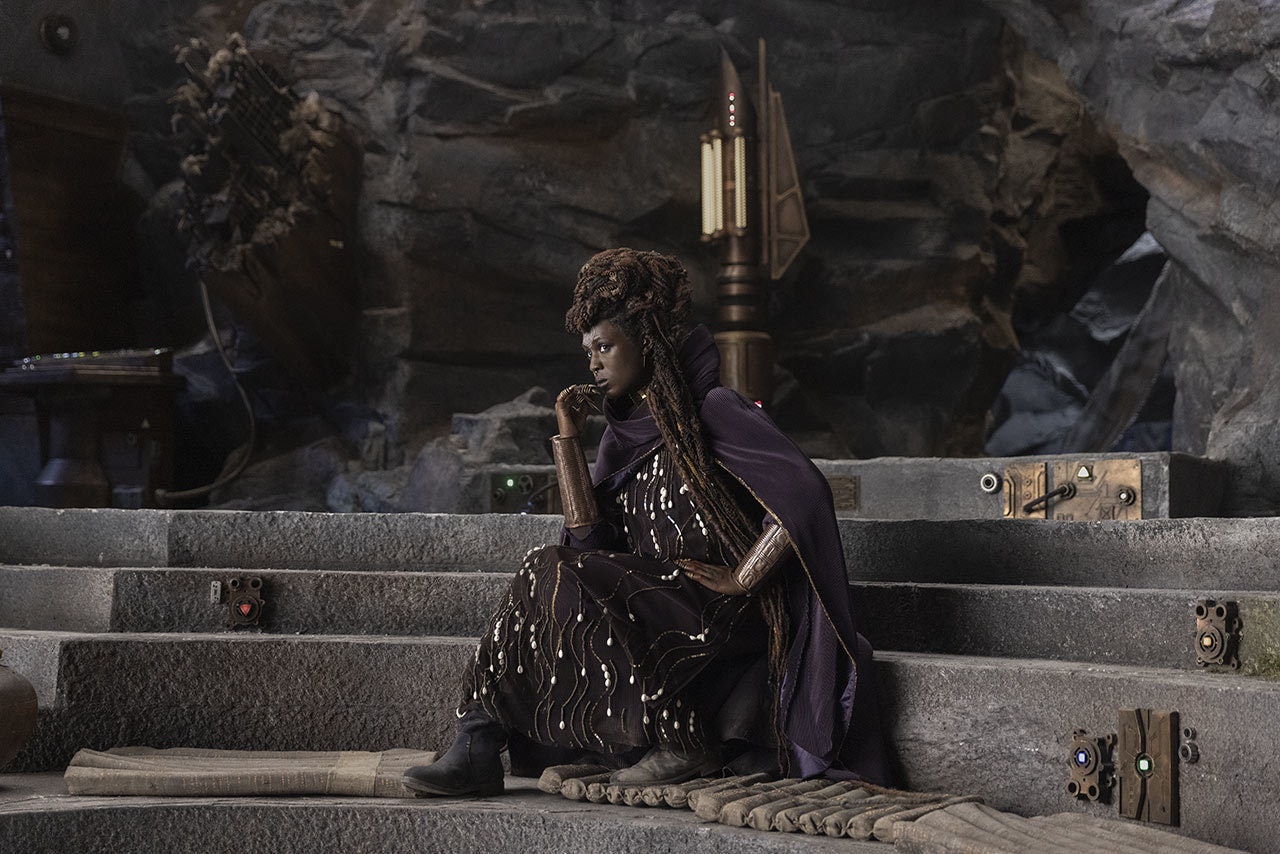
Creating a look for Mae and Osha’s mother, Aniseya (Jodie Turner-Smith), was a more demanding challenge. She and the witches of Brendok were mostly seen at night, which inspired Bryan to cloak the coven in purple. But finding the right shade of purple proved to be a near-impossible task.
“First of all, that purple did not exist,” Bryan says wryly. The designer knew she’d have to dye whatever fabric met her unique specifications, but even those made the search near impossible: “I wanted this fabric to do everything besides get up and talk.”
Though she did end up finding the perfect textured fabric, no one could manufacture the deep plum she was going for. Fortunately, Lucasfilm’s costume department found a way to dye 500 yards of fabric to Bryan’s unique specifications… but they came right down to the wire. “The fabric could barely get dry before I got it into the cutting room,” Bryan says.
Bryan finished off Aniseya’s ascension robe with a little homage to her home in Jamaica: cowrie shells and ornate wooden beading. “Who knew that I would draw on those things that sit way back in the recesses of my brain? I grew up and went to high school in Jamaica — and obviously I’ve spent most of my adult years in the States. But those foundational things, they don’t leave you.”
Enter, the Stranger
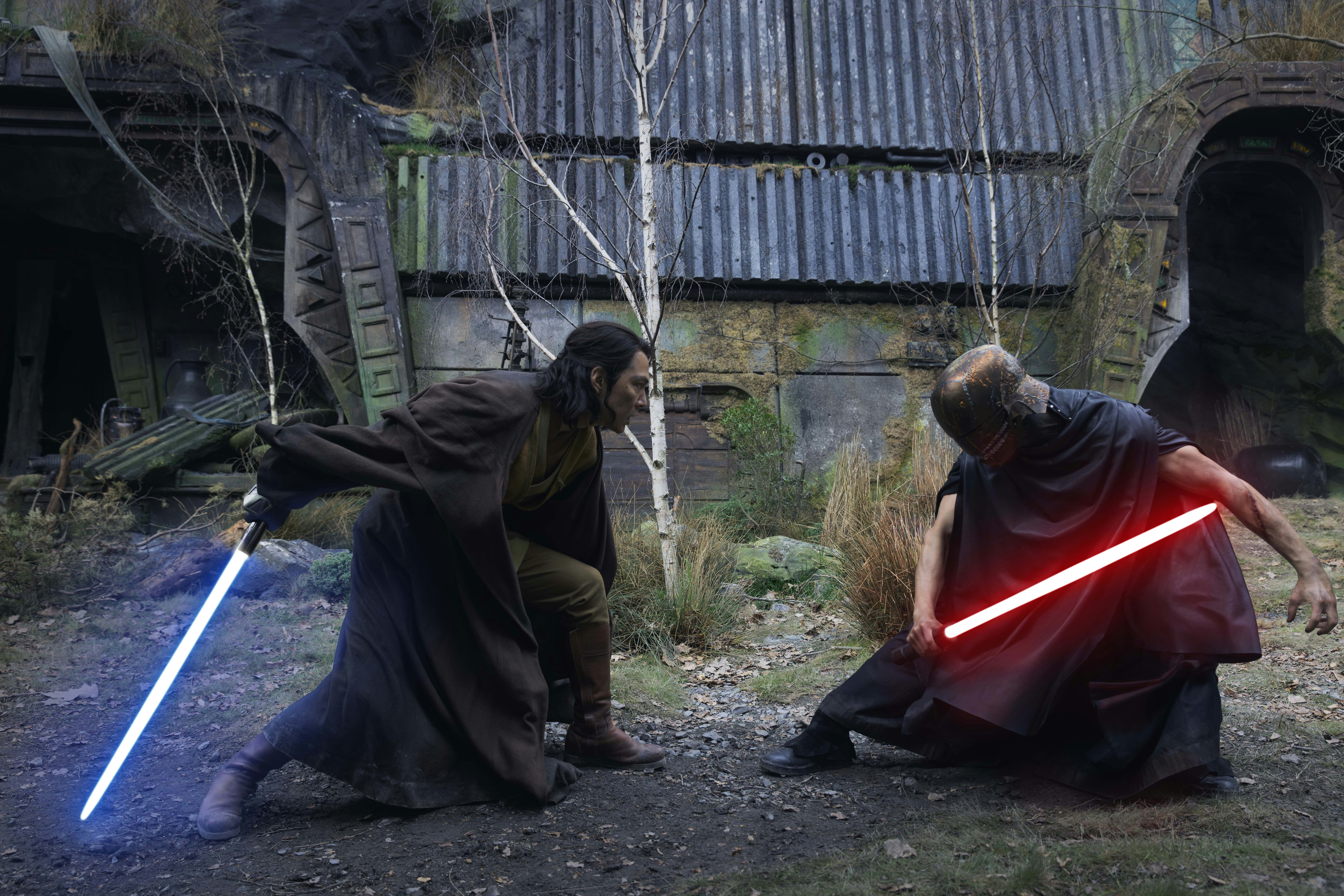
The Stranger’s (Manny Jacinto) all-black ensemble has become a major point of conversation among Star Wars fans. It’s rallied a group of cosplayers on social media, many of whom have already constructed their own take on the character’s look.
For those hoping to reverse engineer the Stranger’s costume, Bryan provides a quick breakdown: “His overcloak is leather — which was also a challenge, to make these big, cowhide skins and have Manny still able to do his choreography. When he takes it off, it is two fabrics: I used mainly silk and wool. The pant is definitely inspired by the Hakama, the Japanese warrior pant.”
The Stranger’s belt serves as a visual homage to the Jedi. “It’s also a very important structural piece to keep the whole [outfit] together. It keeps him upright, and it gives him that triangular shape: that athletic, ‘I work out at the gym and I would kick your ass’ kind of body.”
That’s not the only allusion to the Jedi Order. After revealing his true identity in Episode 5, the warrior formerly known as Qimir sheds his battle armor, slips into a gauzy gray tunic, and attempts to seduce Osha to the dark side.

Fans have compared this scene to Mr. Darcy’s infamous Wet Shirt moment in Pride and Prejudice; Headland has also described this scene as one that redefines the Stranger as a romantic hero. But Bryan takes the allusion a step further, likening it to a baptism.
“By going in the water, he has stripped himself bare,” Bryan says. “He’s not going to put that Stranger outfit back on… He’s revealing to Osha that he has some kind of heart. It’s basically the two of them shedding their own individual armor.”
His new look also has to resonate with Osha’s deep-set desires. Bryan chose a simple material to make the Stranger more “vulnerable” and “pure” — but also a little familiar.
“I think subconsciously, I selected that fabric, that color, because that was what Osha aspired to be: a Jedi.” She compares his tunic to the Jedi’s Coruscant robes: “It could be an old garb, something from another part of his life,” she says, alluding to the Stranger’s past as a Jedi padawan.
The power of many
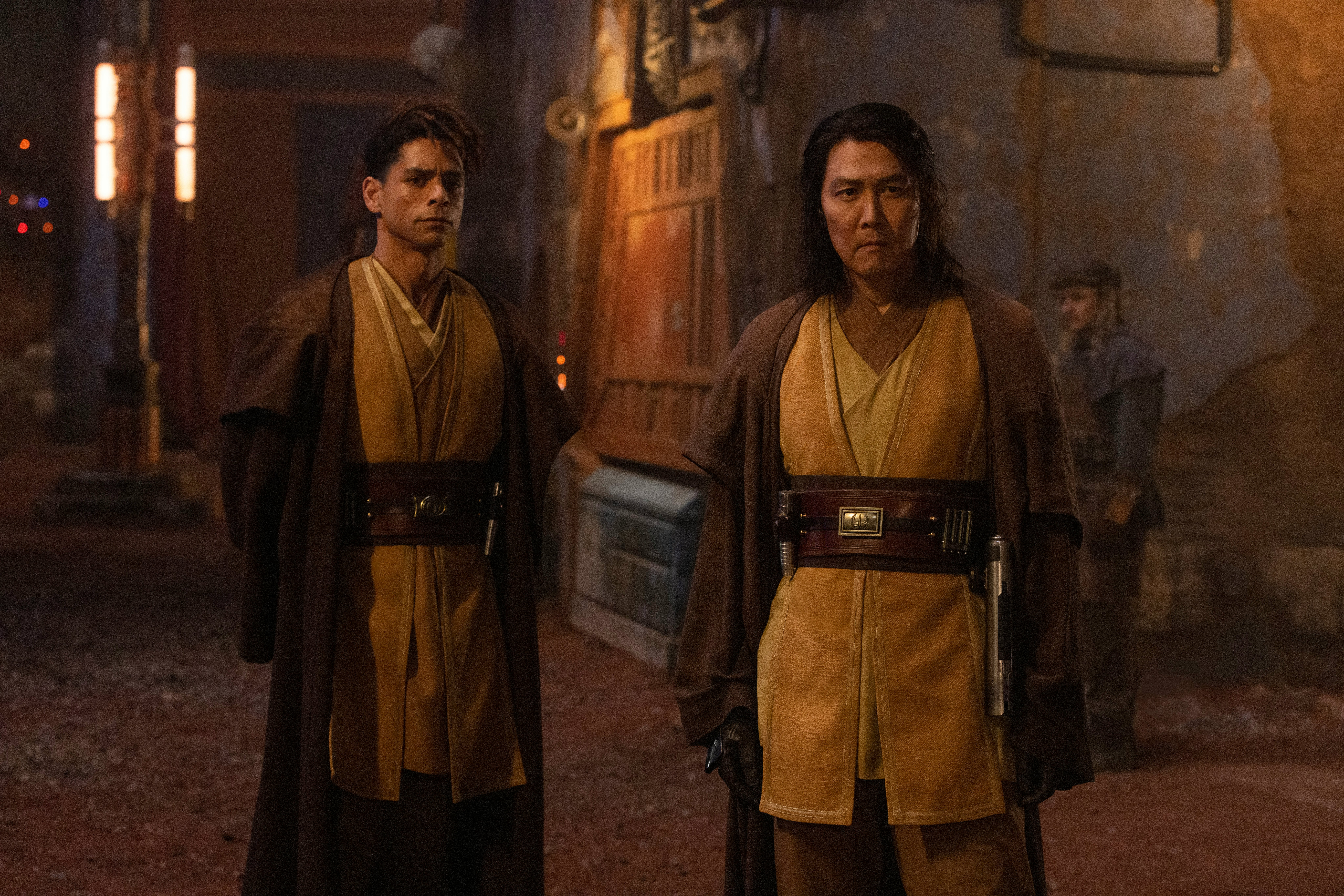
Bryan is still shocked by the speed with which fans have rallied around the series, but it’s no more shocking than the less-than-rational reception to The Acolyte. “The old-guard fanbase are, frankly, not accustomed to seeing people like us in significant roles in the story,” Bryan says. “They’ve found a way to monetize negativity... but even with all that review bombing YouTube stuff, you know what’s been consistent? They’re like, ‘I hate the show, but the costumes are amazing.’”
Either way, the good wound up outweighing the bad. The Acolyte has rekindled a creative fire within the fandom, carving out a space for those who’ve never felt entirely seen in the Star Wars galaxy. It’s the same for Bryan: the designer has been inspired at every step of the creative process — both from Headland and the fandom — and insists that there’s room to grow.
“I’m excited and keeping my brain open for what she’s going to do,” Bryan says of Headland’s plans for a potential Season 2. “I’m really hoping that we get that second season. I really am.”







